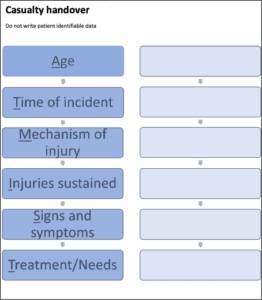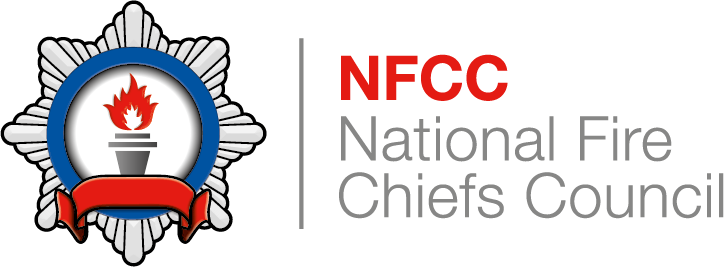- Age
- Time of the incident
- Mechanism of injury
- Injuries sustained
- Signs and symptoms
- Treatment and needs
If treatment has included irrigation of a wound or burn, it may useful for the medical responder to be provided with a sample of the water or liquid used, in case of later infection in the casualty.

If an ATMIST form is used, it should not contain any data that could identify the casualty. It is important to remember that there may be local variations in the casualty handover, using different protocols.
When handing over information to medical responders, consider the following:
- Keep the handover brief; aim for 30 seconds to get the information across
- Do not rush the handover
- Use written notes for reference
- Identify the team leader, or the next link in the chain of care, and introduce yourself
- Let the team know if the casualty is responsive or unresponsive
- Tell them the name of the casualty
- Present accurate and standardised information
- Ask for any questions or points of clarification before handing over the casualty
Handing over the casualty to attending medical resources
Failing to hand over information relating to the casualty’s injuries or condition could result in further harm or death, and compromises accepted standards in record keeping.
Details of the medical treatment provided by the fire and rescue service to any casualty must be recorded on a handover form. The form should contain details of the treatment given and two copies of it produced. One copy should be handed over to the medical responder and another copy securely retained for future reference or investigation.
